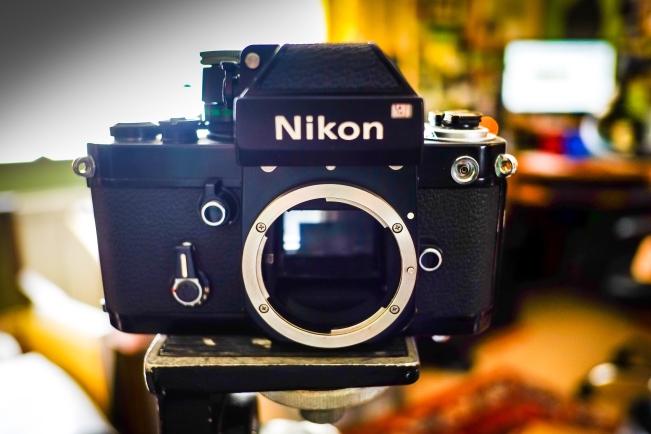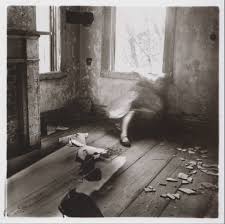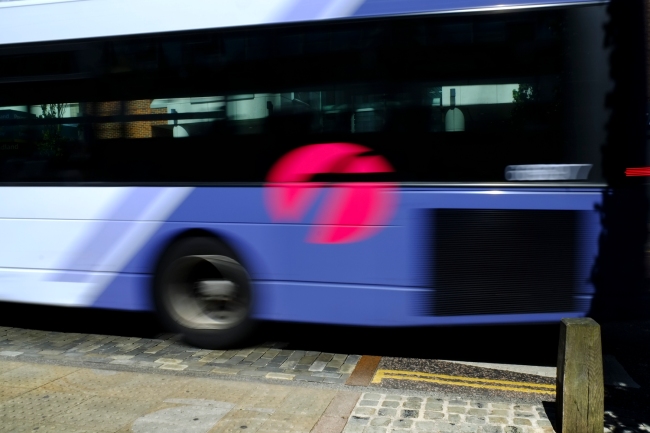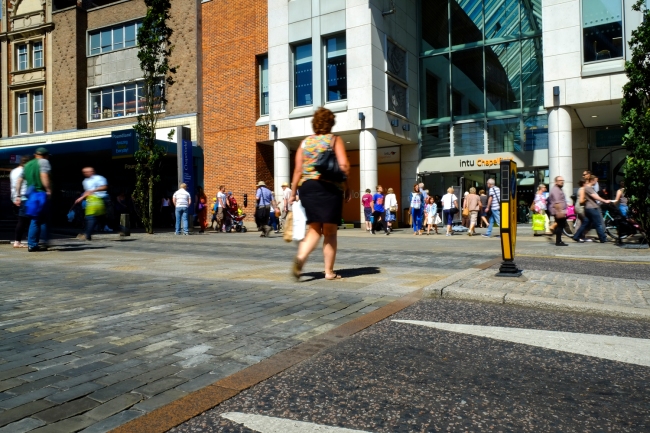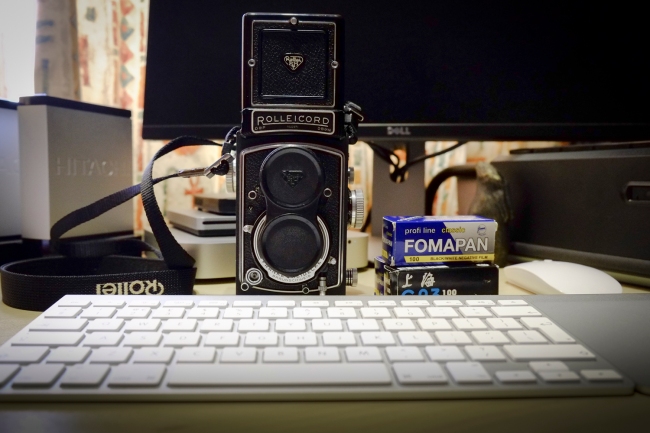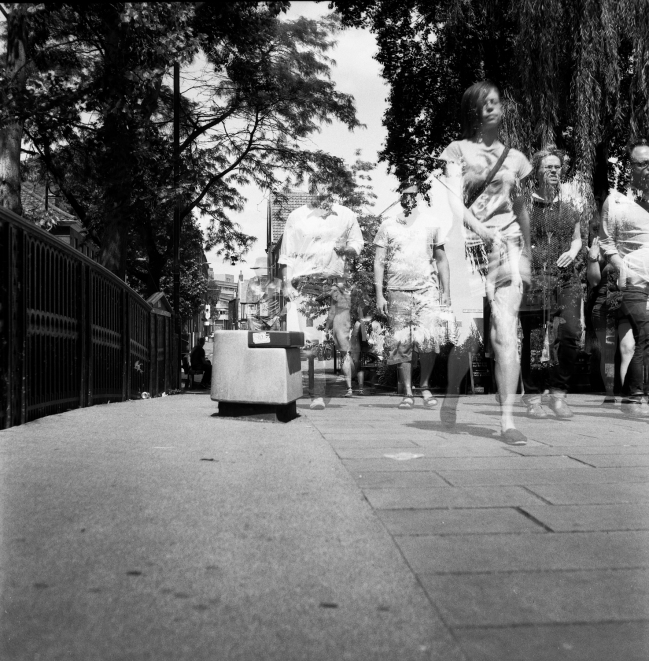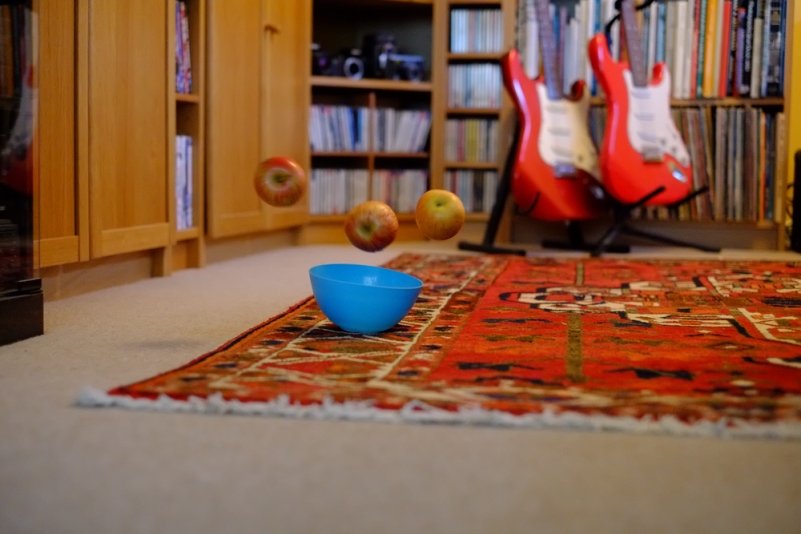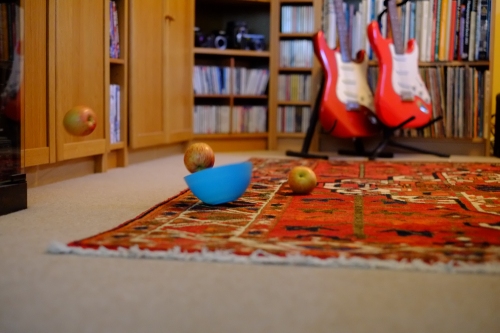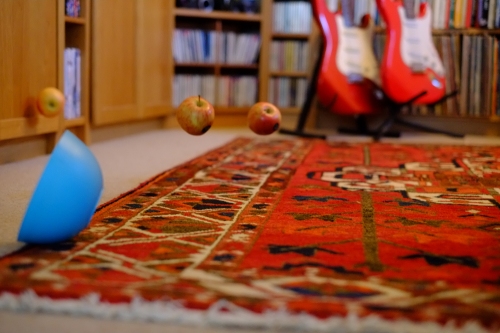1. What do the time frames of the camera actually look like? If you have a manual film camera, open the camera back (make sure there’s no film in the camera first!) and look through the shutter as you press the shutter release. What is the shortest duration in which your eyes can perceive a recognisable image in bright daylight? Describe the experiment in your learning log.
What do the time frames of the camera actually look like? A personal viewpoint
I have to confess a passion for using film rather than digital technology. Whilst digital technology offers a world of possibilities I feel I retain a greater sense of connection with the image making process when using film. I know this is a personal and somewhat idiosyncratic perspective, but it’s mine and I own it. I am not a film evangelist, indeed I harbour a deep distrust of evangelists of any persuasion. I don’t get involved in the film vs digital quality debate. I just get on and make images with film. I have an indescribable connection to the images I make with film that simply does not exist for me with digital equipment. I do use digital kit and thoroughly enjoy it for the immediacy and the creative possibilities it offers, but these still do not measure up when compared to the film image making process. For this reason I felt I needed to say a little more than usual in this particular exercise. I am very used to hearing the duration of a mechanical shutter, the visual experience of seeing a time frame is much rare for obvious reasons.
The action of consciously opening the back of an empty film camera and looking at the duration of the exposure is an interesting one. In simple response to the exercise I can, at full aperture, or with the lens removed, see an exposure of 1/1000 of a second, all be it for a fleeting instant.
For me though, the value in this activity is relating the initial question: ‘What do the time frames of the camera actually look like’, to the concept of the ‘durational space’, a theme I have grown increasingly interested in as the module has progressed and one that is informing my planning and execution of the assignment associated with this part of the course. In particular the work of Michael Wesley, Francesca Woodman and Alexey Titarenko have drawn me into some very different thinking about the nature of the decisive moment. A theme I will pick up in a later blog post.
When using a mechanical film camera, the sense of the durational space of the exposure, a moment in time being captured, is far more concrete and far less abstract than the electrons released at the moment of exposure in a digital camera. When the shutter is figured on a digital camera, a quantity of electrons move at close to the speed of light through circuits and wires to allow the CCD or CMOS sensor to capture a range of photons. At the instant of exposure, an electronically controlled shutter is opened and those photons are immediately turned into quantities of electrons that are in turn assigned very specific values in luminance and in colour. The image processing chip and firmware in the camera working their ‘voodoo’ to conjure up an all electronic reconstruction of the image captured. A marvel of science verging on the mystical, but none the less invisible to the human senses. On many digital cameras even the sound of the shutter is simulated to allow the photographer some semblance of the past and the experience of the image having being secured.
Not so in the mechanical film camera where an altogether more concrete process takes place at the moment of exposure. Indeed much of the process can be seen and is both visible and audible. As the shutter release is pressed and the mirror lifts, the viewfinder darkens and the visual image is obscured as the shutter curtain travels at speed, almost like a guillotine, slicing a moment in time and allowing it to be imprinted on the emulsion covered surface of the the film behind its normally light tight material. A concert of the mechanical activity and optical contrivance, allows for the chemical changes in a films emulsion, in response to light being captured and recorded of the scene the camera is pointed towards.
So what do the time frames of the camera actually look like? Well depending on the camera they look like moments of light, flashing in an instant accompanied by the sounds of mechanical activity all for me associated with the instant an image is created. The sight and sound come together in distinct and decisive moment of their own, incontrovertibly associated with the moment an image is made.
Recording the process of capturing durational space!!
2. Find a good viewpoint, perhaps fairly high up (an upstairs window might do) where you can see a wide view or panorama. Start by looking at the things closest to you in the foreground. Then pay attention to the details in the middle distance and, finally, the things towards the horizon. Now try and see the whole landscape together, from the foreground to horizon (you can move your eyes). Include the sky in your observation and try to see the whole visual field together, all in movement (there is always some movement). When you’ve got it, raise your camera and take a picture. Add the picture and a description of the process to your learning log.
The Pier- 28mm, f7.1, 1/600
